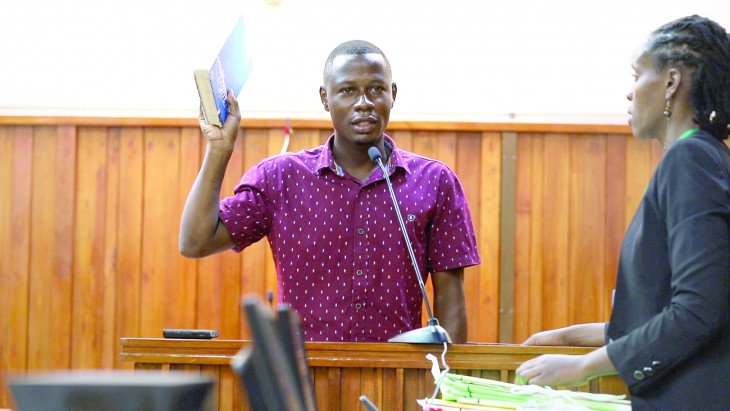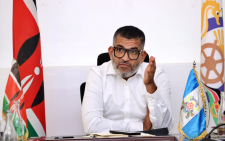Battered and broken, most terror victims recoil to self

In 2021, *Ali* was with his two friends when heavily armed people ambushed and kidnapped them. Witnesses say the men looked like police, claims which Ali’s family could not substantiate and which police deny.
Their whereabouts remained unknown until the bodies of the friends started “turning up” one by one, miles away from the kidnap scene.
“The bodies had visible marks of torture. The eyes were gouged out, with marks of strangulation and burns, possibly caused by hot iron bars,” says Katana, Ali’s cousin who recently went to a city morgue on learning that an unidentified body suspected to be Ali’s had been found.
Two weeks later, he and other family members made another trip to Kiambu when the body of the second friend was discovered in one of the morgues. The body was damaged beyond recognition, but they got a reprieve when a DNA test showed it was not Ali’s.
Untold suffering
Katana shivers whenever he imagines the pain and suffering the victims underwent. “They must have begged for their lives; they must have called for God’s help. How inhumane can someone be to torture a fellow person that way,” he remarks.
After the family’s prayers, Ali returned home after several months of what his family terms as physical and mental torture. Since his return, the father of four has been a shadow of his former self. Katana says Ali refused to reveal his whereabouts during the five months he was missing.
“He has disassociated himself with everyone, including his wife and children. He is scared of everyone and isolates himself. Like family, we are scared of what we are dealing with,” he says.
Katana says Ali bears signs of mental anguish. He has scars that must have been caused by torture. His family believes the police were behind the kidnapping and torture.
As the world marked International Day in Support of Victims of Torture, Ali’s case is not isolated. Several people have undergone similar ordeals, and have opted to remain silent.
Last November, lawyer and Islamic scholar Hassan Nandwa mysteriously disappeared alongside his client, hours after the client was released. Nandwa was the defence lawyer of ex-terror convict Elgiva Bwire, who had been released after completing his jail sentence. They disappeared the same day.
Professor Nandwa was, however, dumped in Kitui county. He appeared confused and drugged. The whereabouts of his client are still unknown.
Like other victims of kidnapping and torture, Nandwa has remained tight-lipped on what really happened.
The United Nations Convention terms “torture” as any act where severe pain or suffering — physical or mental — is intentionally inflicted on a person so as to obtain from him or a third person information or a confession. Also, torture may be aimed at punishing somebody for an act he or a third party did, or is suspected to have done, or intimidating or coercing him or a third person.
In dark room
Gender, security and human rights expert Marie Ramtu says Ali’s change in behaviour is typical of torture cases. “Physical torture is the most common during interrogations. Mental torture is then used to make victims think in certain ways,” she says.
Once enough information has been extracted from the victims, or they seem to know nothing about what they are being grilled on, they are usually locked in dark rooms or white rooms with bright lights. Also, they are usually denied basic needs.
This confuses the victim and gives the wounds time to heal, besides concealing evidence of mistreatment should the victims be released. Unfortunately, very few people are lucky to survive the ordeal. Many captors opt to murder them to avoid the risk of their own exposure. But Kenya’s Constitution is clear on the standards of arrests, interrogation and prosecution. Ramtu says 90 to 98 per cent of victims are Muslim.
Ernest Cornel, a communication and advocacy officer at Muslims for Human Rights (Muhuri), says: “Very few families come out and say their kin have returned. Also, they are unwilling to open up about what happened in captivity.”
Between 2020 and 2022, Muhuri has recorded 14 cases of “counter-terrorism kidnappings”of people the police have linked to terror-related claims.
Two found dead
Recently, two victims were found dead. Seven others eventually returned home, but none has talked about their ordeals. The whereabouts of five remain unknown. “And the figures might be higher since we only document recorded cases. The majority are not reported to rights organisations,” he says.
A 2021 report by a medico-legal organisation that monitors misconduct by law enforcers showed that by October, 43 cases of torture and inhuman treatment allegedly by police were recorded since the beginning of that year.
The report accused police and prison officers of using torture and violence during interrogations, besides punishing pretrial detainees and prisoners.
Physical battery and bondage, as well as electric shock, were the most common methods used by police.
Investigations by Declassified-UK, a media organisation uncovering UK’s foreign policy, military and intelligence’s real role, unravelled how foreign governments funded the torture and killings of suspected terrorists in Kenya.
The governments’ of the US and UK reportedly funded and equipped Kenya’s special forces to torture and eliminate suspects allegedly linked to terrorism, hence the recent killings at the Coast.
In 2021, Muhuri sent a request to the US government seeking details on its involvement in the torture and killings of Kenyan suspects, as stated by Declassification. The US government neither confirmed nor denied the allegations.
Police spokesperson Bruno Shioso says these are just claims — with no facts and evidence. He adds that no law warrants torture of suspects.
The Independent Policing Oversight Authority (IPOA) chairperson, Anne Makori, says their main mandate is to stop or deter arbitrary arrests, torture and murder of suspects.









